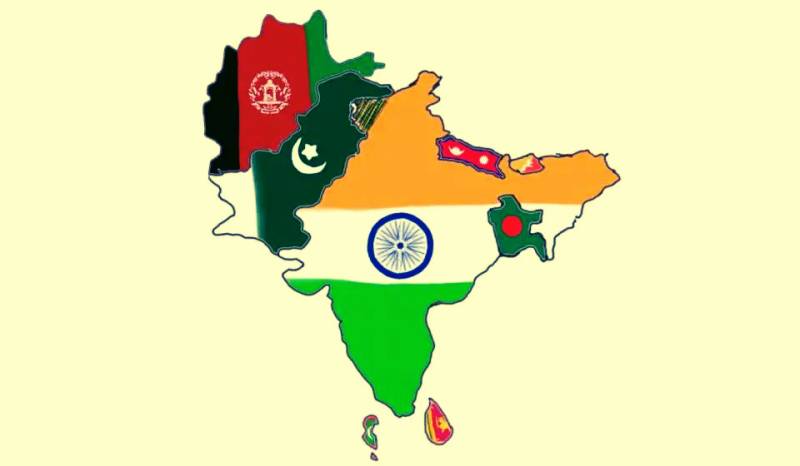
In 2024, South Asia stood at a crossroads—its streets brimming with the fervor of elections and its corridors of power grappling with the challenges of governance and economic meltdown. This year, democracy was both celebrated and questioned as countries across the region headed to the polls in a show of resilience and reform. Yet, behind the ballot boxes lay shadows of controversy: allegations of electoral manipulation, institutional overreach, and deepening divides within societies.
From Pakistan’s contentious elections to India’s polarising campaign rhetoric and from Sri Lanka’s fresh wave of political optimism to Bangladesh’s popular uprising against an authoritarian regime and subsequent governance crisis, South Asia’s democratic processes became a mirror reflecting both hope and fragility. This was also a year when economies fought to recover from turbulence, geopolitical tensions tested alliances, and human rights remained precariously perched on the edge of state-sponsored repression. In this intricate tapestry of progress and pitfalls, South Asia continued to write its complex story of transformation—bold, uneasy, and undeniably crucial to the world’s future.
Elections and Democratic Aspirations
This was a year of elections across South Asia, with Bangladesh, Bhutan, India, Pakistan, and Sri Lanka heading to the polls. While these events symbolised the region’s democratic resilience, controversies surrounding fairness and inclusivity cast shadows on the integrity of these processes, deepening the public trust deficit.
In Pakistan, elections were mired in skepticism. Delayed polls, accusations of military interference, and the sidelining of former Prime Minister Imran Khan through a flurry of legal cases painted a troubling picture. Despite credible allegations of abuse of power during Khan’s tenure, his prosecution appeared politically motivated, further polarising the nation. The military establishment’s overreach and an increasingly frail judiciary underscored the deep cracks in Pakistan’s democracy.
In India, the Lok Sabha elections brought a third consecutive term for Prime Minister Narendra Modi, though his coalition’s reduced majority highlighted growing dissent. Modi’s campaign, however, was criticised for its divisive rhetoric, particularly against Muslims, which alienated minorities and widened societal fractures. Allegations of voter suppression, misuse of government schemes to sway voters, and weaponisation of investigative agencies against opposition leaders added to the controversy. India’s vibrant democracy displayed its strength through high voter participation but struggled with creeping authoritarianism.
Bangladesh faced its own crisis of legitimacy. A Supreme Court decision reinstating job quotas for descendants of freedom fighters triggered massive protests, culminating in Prime Minister Sheikh Hasina’s resignation in August. Nobel laureate Muhammad Yunus was brought in to lead an interim government tasked with stabilising the nation and ensuring free and fair elections. However, the legacy of heavy-handed governance left scars on Bangladesh’s democratic aspirations.
Afghanistan remained a flashpoint as the Taliban regime grappled with insurgencies, human rights violations, and tensions with neighboring Pakistan. Cross-border violence and Pakistan’s airstrikes on Taliban hideouts underscored the volatility of the region’s security landscape.
In Sri Lanka, presidential and parliamentary elections offered a rare ray of hope. Anura Kumara Dissanayake’s victory in the presidential polls marked a decisive rejection of entrenched political elites. After years of economic mismanagement and political stagnation, the National People’s Power (NPP) party’s parliamentary landslide underscored public demand for accountability and change.
Bhutan and the Maldives also underwent significant political transitions, with Bhutan electing a new leadership and the Maldives enacting constitutional amendments aimed at protecting sovereignty and fostering governance reforms. Both nations displayed a commitment to addressing their unique challenges while striving to strengthen their democratic frameworks.
Economic Fragility and Resilience
Economic instability remained a hallmark of South Asia in 2024, with global headwinds, political unrest, and systemic inefficiencies straining national economies. However, some countries demonstrated resilience and undertook notable recovery efforts.
Sri Lanka's fiscal reforms, guided by the IMF, helped the nation slowly recover from its economic collapse in 2022. Debt restructuring and fiscal discipline remained central to these efforts, though public discontent over austerity persisted.
Pakistan, in contrast, continued to struggle. Inflation eased marginally but remained a significant burden on citizens. Reliance on bailouts and an inability to attract sustained foreign investment hindered progress. Security challenges, including an uptick in terrorism, added complexity to Pakistan’s economic woes.
India projected itself as a global economic bright spot, with substantial investments in technology and infrastructure. However, unemployment, inflation, and rural distress persisted, revealing vulnerabilities beneath its robust growth narrative. India’s ambitious “INDIAai Mission” underscored its aspirations to become a global leader in artificial intelligence, showcasing its forward-looking vision.
Smaller economies like Nepal and Bhutan sought innovative solutions to drive growth. Bhutan’s Gelephu Mindfulness City project integrated economic development with sustainability and mindfulness, while Nepal emphasised hydropower projects to bolster energy exports.
Geopolitics and Regional Dynamics
Geopolitical rivalries continued to shape South Asia’s external engagements. Afghanistan remained a flashpoint as the Taliban regime grappled with insurgencies, human rights violations, and tensions with neighboring Pakistan. Cross-border violence and Pakistan’s airstrikes on Taliban hideouts underscored the volatility of the region’s security landscape.
Strengthening minilateral platforms like the Bay of Bengal Initiative for Multi-Sectoral Technical and Economic Cooperation (BIMSTEC), the Shanghai Cooperation Organisation (SCO), G-20, and the Quadrilateral Security Dialogue (Quad) provided South Asian nations with enhanced connectivity and collaboration opportunities. India’s participation in Quad initiatives highlighted its balancing act between countering China’s influence and fostering regional stability. Meanwhile, Pakistan’s hosting of the SCO summit reaffirmed its strategic importance.
Governments across the region used violence, restrictive laws, and surveillance to suppress dissent, disproportionately affecting marginalised groups.
However, the weakening of SAARC raised concerns. Once envisioned as a unifying platform for South Asia, SAARC’s diminished role highlighted missed opportunities for regional integration. Reviving the alliance could unlock progress on shared challenges, including climate change, terrorism, and economic instability.
Human Rights Violations and State Overreach
Human rights in South Asia faced grave challenges in 2024, with states often acting as primary violators. Governments across the region used violence, restrictive laws, and surveillance to suppress dissent, disproportionately affecting marginalised groups.
In Pakistan, Afghan refugees faced mass deportations and harassment, with authorities showing little regard for their rights or safety. In India, Bangladeshi-origin residents continued to face discrimination under the National Register of Citizens (NRC) and other exclusionary policies. Reports of enforced disappearances surfaced across the region, from activists in Pakistan to opposition members in Bangladesh, reflecting a worrying trend of state-sanctioned silencing of dissent.
Digital rights suffered as governments weaponised technology to stifle opposition. Internet shutdowns in Pakistan and India, censorship laws in Pakistan, and surveillance in Bangladesh violated citizens’ privacy and curtailed freedoms. Media repression persisted, with journalists facing harassment, arbitrary arrests, and even assassination attempts. These patterns underscore the region’s regression on fundamental freedoms.
Violence Against Women: A Harrowing Crisis
South Asia continued to grapple with endemic violence against women in 2024, with several high-profile cases of sexual and gender-based violence shedding light on systemic failures. In India, the rape and murder of a female medical student in Kolkata highlighted persistent issues of gender-based violence. Widespread protests by medical professionals demanded accountability and better security measures, but systemic change remained elusive.
In Pakistan, reports of sexual violence triggered protests in Lahore, where students clashed with police over an alleged on-campus rape (later proved to be fake news). But the debate on the case and the government’s dismissive response reflected the impunity and victim-blaming culture that hinder justice for survivors across the region. When the reports about this alleged rape proved to be incorrect, the government weaponised it for posing restrictions on social media under the garb of fighting disinformation.
South Asia’s story in 2024 is one of paradox—a region burdened by entrenched inequities and systemic failures yet brimming with the potential for transformation
The veracity of the reports about this particular case aside, the fact remains that the incidents of sexual violence against women, children, and other gender minorities are symptomatic of deeply entrenched patriarchal norms, inadequate legal protections, and societal stigmas that perpetuate violence against these groups. Without systemic reforms and robust support mechanisms, the cycle of violence and impunity is unlikely to abate.
The Path Forward: Opportunities Amid Challenges
As 2024 draws to a close, South Asia finds itself navigating a landscape filled with both daunting challenges and unprecedented opportunities. The region’s democratic fabric has been tested by flawed elections, authoritarian overreach, and political instability. Yet, the resilience of its people, reflected in grassroots activism, rising civic consciousness, and demands for accountability, signals a readiness to confront these obstacles head-on.
Economic recovery remains a priority, with nations like Sri Lanka demonstrating the potential for rebuilding amid crises. Regional cooperation through platforms like the BIMSTEC, the SCO, the G-20, and Quad offers a roadmap for enhanced connectivity and shared growth while reviving SAARC could unlock solutions to collective challenges like climate change, cross-border terrorism, and trade barriers. For South Asia to thrive and unlock its potential, its governments must prioritise democratic consolidation, economic reforms, and human rights protections. The entire region needs to invest in strengthening democratic institutions, ensuring judicial independence, and protecting fundamental rights, including those of women, minorities, and refugees. Most importantly, leadership across the region must commit to inclusive development, bridging divides rather than exacerbating them.
South Asia’s story in 2024 is one of paradox—a region burdened by entrenched inequities and systemic failures yet brimming with the potential for transformation. The way forward demands courage: from leaders to reform broken systems, from citizens to hold them accountable, and from the international community to support the region’s democratic aspirations without compromising its sovereignty. In the end, the future of South Asia will not be written solely in its corridors of power but in the collective will of its people to fight for justice, equality, and a brighter tomorrow.

